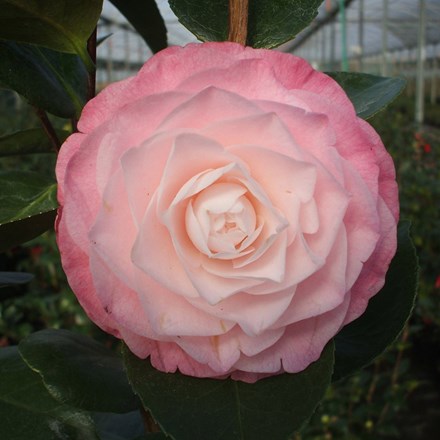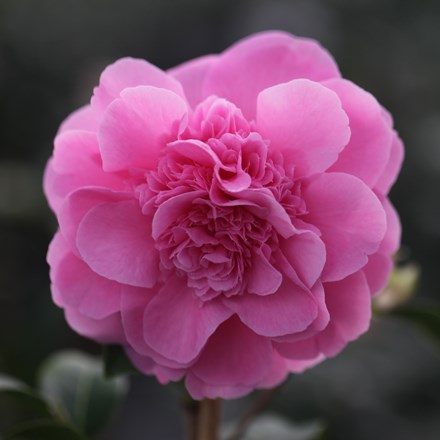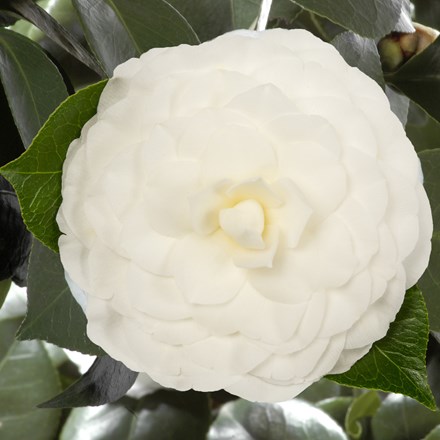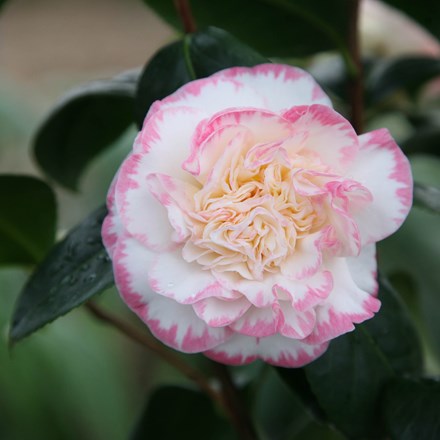Camellias are evergreen shrubs or small trees. Their flowering periods vary from autumn to spring. They are hardy in most parts of the U.K. They are originally woodland plants native to India, Japan and China. To mimic their woodland conditions they are best grown in shelter and light shade. Morning sun on the dew covered flowers can cause browning. They can be grown in sunnier situations, but more watering will be required to prevent bud drop, especially if grown in containers.
The leaves are glossy and shiny. The delightful flowers can be single, semi-double or double and come in a wide range of colours. They are various shades of white, pink and red.
Camellia x Williamsii Debbie
For those with acid soils, they are happy in borders. If you are not sure of your soil conditions, purchase a soil testing kit. If you live in an area with more alkaline soil it is best to grow them in containers in ericaceous compost. For long term planting I recommend a soil based John Innes ericaceous compost which will hold it’s structure. Containers may need to be wrapped in fleece or bubble wrap for winter protection in colder areas. Watering with rainwater is ideal, especially in hard water areas, as tap water can contain too much calcium and decrease the acidity of the soil.
Camellia Japonica Nuccio’s Gem
Feeding can be carried out with an ericaceous fertilizer in spring or summer, but no later than July as this can cause bud drop.
Most garden varieties of Camellia are hybrids of Camellia Japonica from Japan or Korea. The variety pictured at the top of the article is Camellia Japonica Desire. Also cultivars of Camellia Sasanqua are available which will flower around November and have scented flowers. Camellia Sasanqua varieties may need protection in cold areas. Knowledgeable gardeners will often recommend the Williamsii hybrids of which there are more than 100 named varieties such as Donation and Debbie. These are hybrids of Camellia Saluenensis and are said to be particularly free flowering.
Camellia Japonica Margaret Davis
Little pruning is required, but in April your can shorten straggly shoots. Deadheading is required for most varieties. Problems include frost damage and also birds can harm the flowers.
Propagation is possible from cuttings, layering or seed, although plants grown from seed are unlikely to come true and can take several years to flower.
To view a selection of Camellias at Waitrose Garden click here
If you have enjoyed reading our blog post then why not fill in the form provided to allow us to send you our blog posts and newsletters by email.
All Images copyright Waitrose Garden
Mark Snelling.




